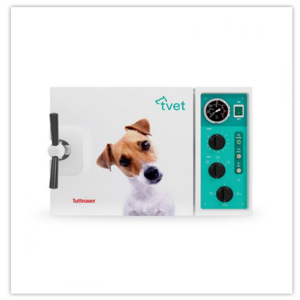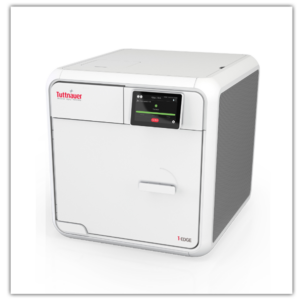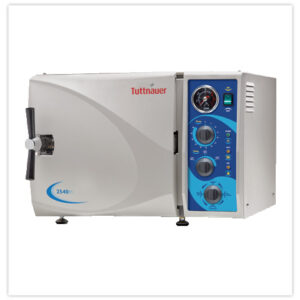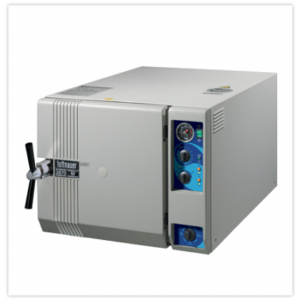Autoclave Maintenance Checklist for your Practice
Autoclave sterilization is a reliable and efficient way to disinfect medical tools, scientific instruments, and food preparation equipment. But how does it work? In this step-by-step guide, you’ll learn about the key components of autoclave sterilization and its effectiveness in killing harmful bacteria.
Before Each Use
Before beginning the autoclave sterilization process, you’ll need to properly prepare the materials. Ensure all items to be sterilized are properly cleaned and wiped down with a lint-free cloth to remove any visible contaminants. Make sure that small items are secured in containment bags.
- Ensure the contents being sterilized are clean and free from debris. The instruments could become damaged if not cleaned.
- Inspect the door gasket for wear or cracking. The gasket and surface should be cleaned with mild detergent using a cloth.
- When running a sterilization cycle it is very important to not overload the trays as it will cause poor sterilization and drying. There should be some space between the packs and the walls of the chamber to allow for steam circulation.
- Always be sure to use a test strip with every cycle for confirmation that the correct parameters have been met for sterilization.
Cleaning
Keeping your autoclave clean is the most important maintenance item for your autoclave. We recommend using Chamber Brite autoclave cleaner every 20 cycles.
Here are some scenarios to show the cleaning frequency:
| Average cycles per weekday | Autoclave should be cleaned |
|---|---|
| 1 cycle | Monthly |
| 2 cycles | Bi-weekly |
| 4 cycles | Weekly |
- Clean the trays and rack with a non-scratch pad using a mild non-abrasive detergent. Always rinse thoroughly. Caution: Do not use steel wool, wire brushes, CLR or bleach.
- Sprinkle Chamber Brite powder along the bottom of the autoclave chamber. Note: Ensure the autoclave is cold – this is to avoid the cleaner burning onto the base of the chamber.
- Start a sterilization cycle with distilled water but no drying cycle. On Tuttnauer machines, this is the “scissor” cycle.
- At the end of the cycle, drain the solution from the reservoir and discard it.
- Fill the reservoir with distilled water and repeat steps 2 and 3 without Chamber Brite. Discard the water after the rinse cycle.
- Wipe the interior of the chamber with a damp cloth.
- Fill the reservoir with distilled water.
- The autoclave is now ready to use!
Annual Autoclave Maintenance
To prevent emergency repairs, annual maintenance is recommended. This maintenance typically includes the following:
- Inspect electrical components
- Inspect and replace the door gasket
- Inspect water and air filters
- Lubricate the door latch
- Check the system for leaks
Intriquip offers this service by in-house certified technicians. Contact us for more information.
Download Our FREE Autoclave Maintenance Cleaning Guide
PDF guide for cleaning automatic and manual autoclaves.
This is a maintenance cycle to be done with Chamber Brite TM cleaner for cleaning the chamber and piping of the autoclave. We recommend using Chamber Brite TM and cleaning the autoclave every 20 cycles or once per week whichever is longer.




